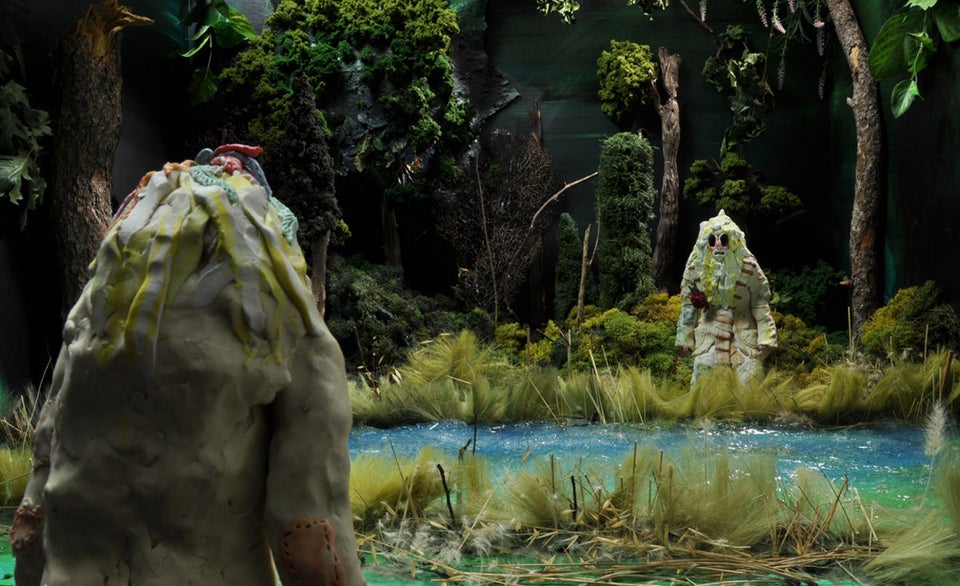When we think of how women were represented in 19th century art, Mary Cassatt's high class matriarchs come to mind, enjoying their leisure hours with an afternoon stroll and a cup of tea. Yet seedier representations of the female gender were also produced in abundance, illuminating the trials of ladies for whom leisure hours were not an option at the time.
Drug addicts, prostitutes, alcoholics -- these were the women who populated the canvases of many a French artist, those who wished to capture the economic unrest that accompanied fin-de-siècle's artistic revolution. "Tea and Morphine: Women in Paris, 1880 to 1914" creates a multidimensional portrait of the Parisian woman at the turn of the century, spanning from the frilly collars of the upper class to the dirty syringes of the desperately poor. This iconic era yielded transformative artistic innovation and with it major social and cultural upheaval, leaving both men and women scrambling to keep their lives and sanity in place.
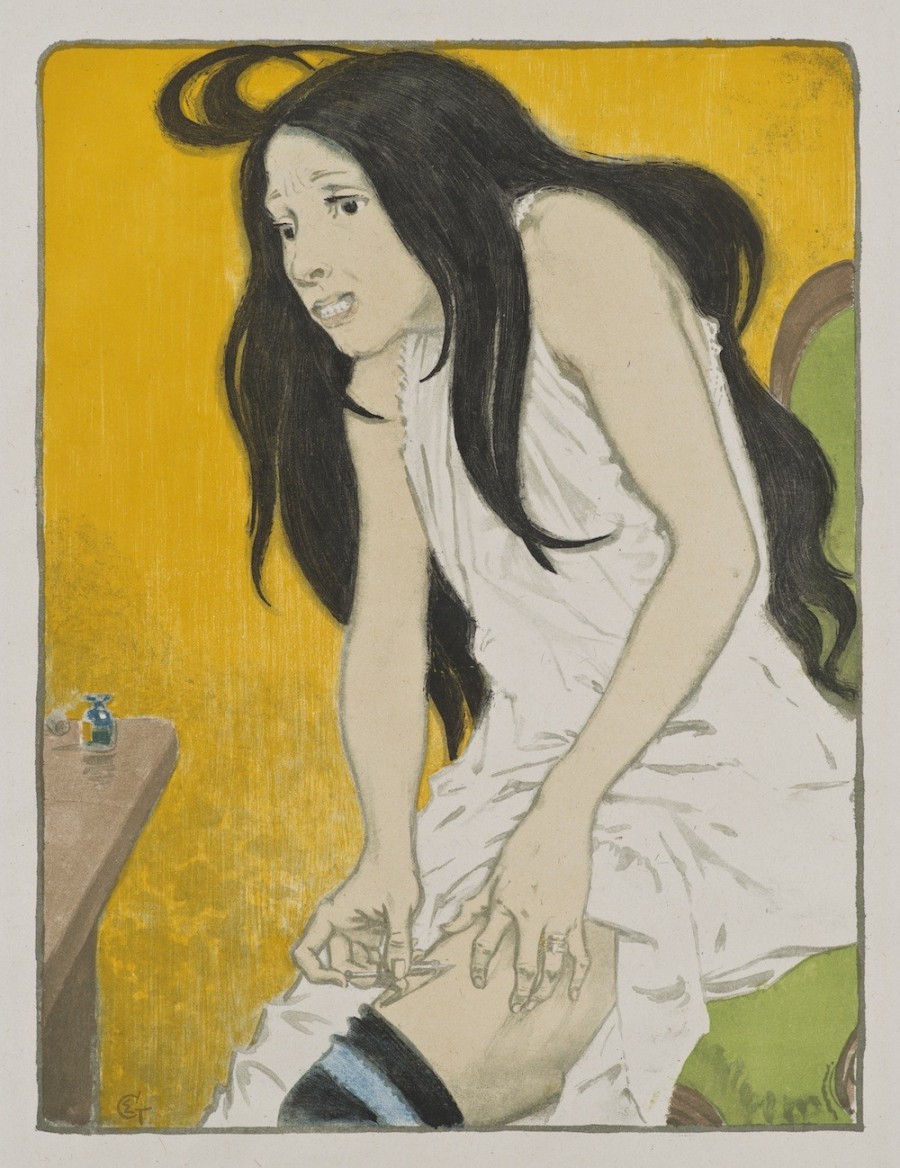
Eugene Grasset, La Morphinomane [The Morphine Addict], 1897. Color lithograph, 22 ½ x 16 7/8 inches (57.2 x 42.9 cm). Collection UCLA Grunwald Center for the Graphic Arts, Hammer Museum. Promised Gift of Elisabeth Dean. Photograph by Brian Forrest.
In George Bottini's "Sagot’s Lithography Gallery," women donning corsets and feathered hats gather round a shop window oohing and awing, their hands propped on their waists in the latest fashion. On the other end of the class hierarchy is Eugene Grasset's "The Morphine Addict," a frail girl in a nightgown, wincing in pain while jamming a needle into her thigh. Some depictions, like Henri Jean Guillaume Martin's "The Silence," eschew class signifiers altogether, depicting a ghostly beauty donning a crown of thorns, seemingly outside of the real world and its economic gripes altogether.
This stunning exhibition reveals the wide range of roles women played in 19th century Paris, while hinting at the limited styles in which they were portrayed. From ethereal sirens to witchy femme fatales, high society debutantes and destitute morphine addicts, women's lives were dramatized through the male gaze and paintbrush, their struggles stylized and rendered beautiful, no matter how dark their origin.
"Tea and Morphine" features 100 works from a wide range of artists, including Edgar Degas, Odilon Redon, Mary Cassatt, Henri de Toulouse-Lautrec, Alfredo Muller and many, many more. Aside from the prints, the show will display rare books, menus, theater programs and music scores to fully convey the momentum and madness of the time. The exhibition is on view from January 26 until May 18, 2014 at the Hammer Museum in Los Angeles.
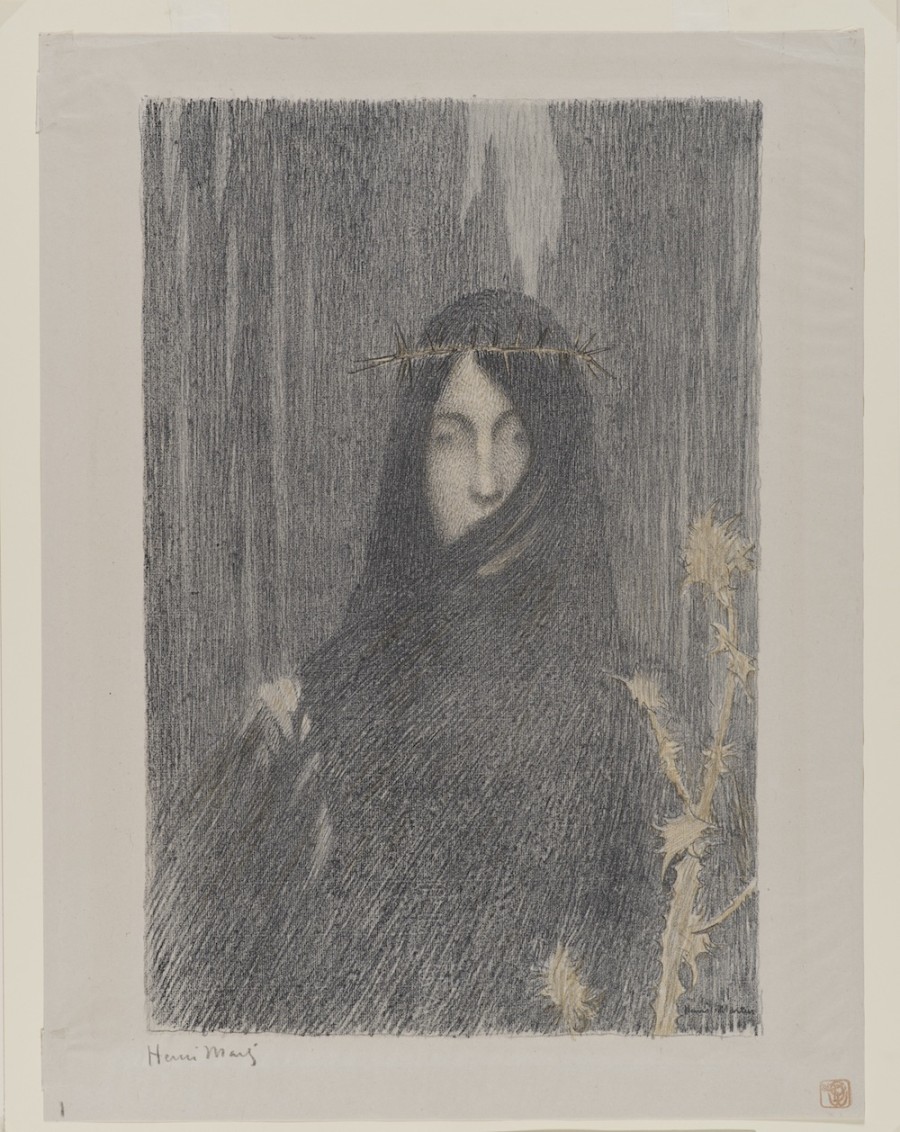
Henri Jean Guillaume Martin, Le silence [Silence], c. 1894 - 1897. Color lithograph, 22 ½ x 17 inches (57.2 x 43.2 cm). Collection UCLA Grunwald Center for the Graphic Arts, Hammer Museum. Promised Gift of Elisabeth Dean. Photograph by Brian Forrest.
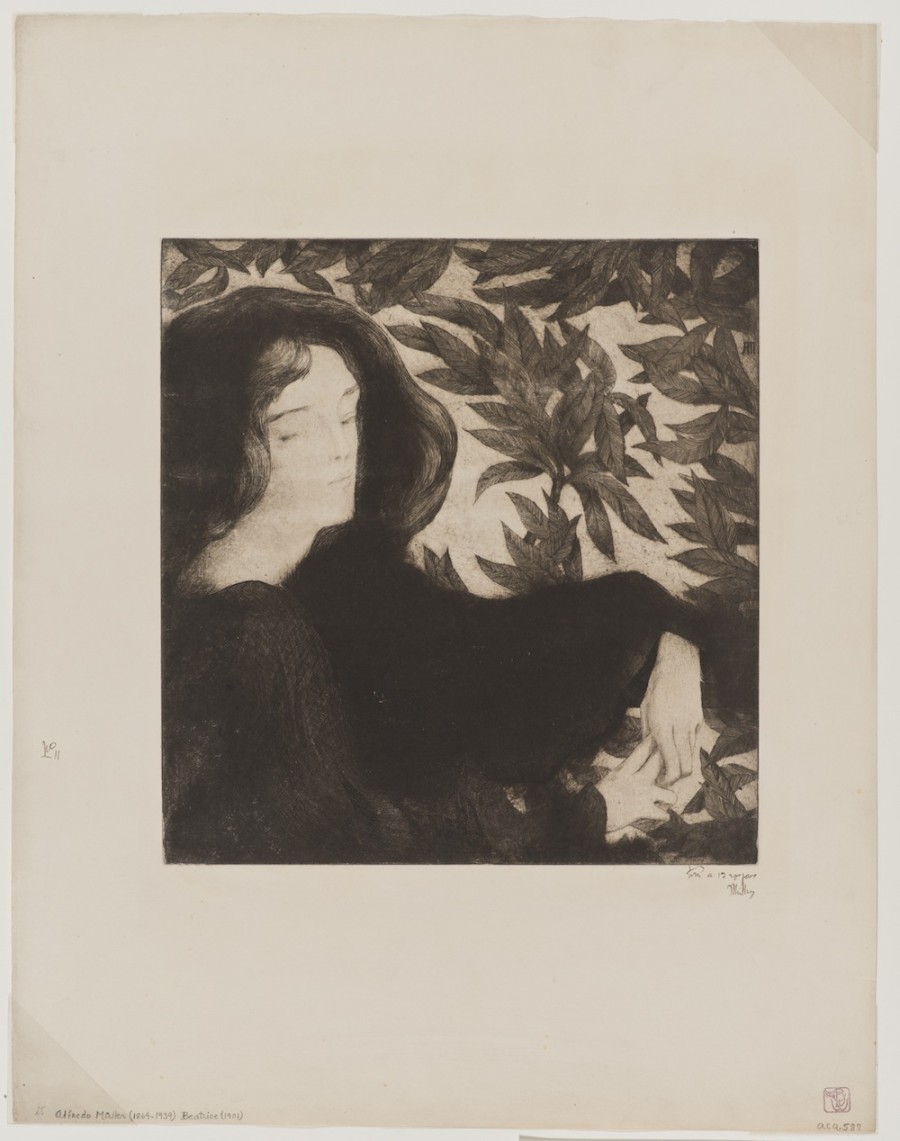
Alfredo Müller, Beatrice, c. 1899. Etching and aquatint, 25 x 19 ½ inches (63.5 x 49.5 cm). Collection UCLA Grunwald Center for the Graphic Arts, Hammer Museum. Promised Gift of Elisabeth Dean. Photograph by Brian Forrest.
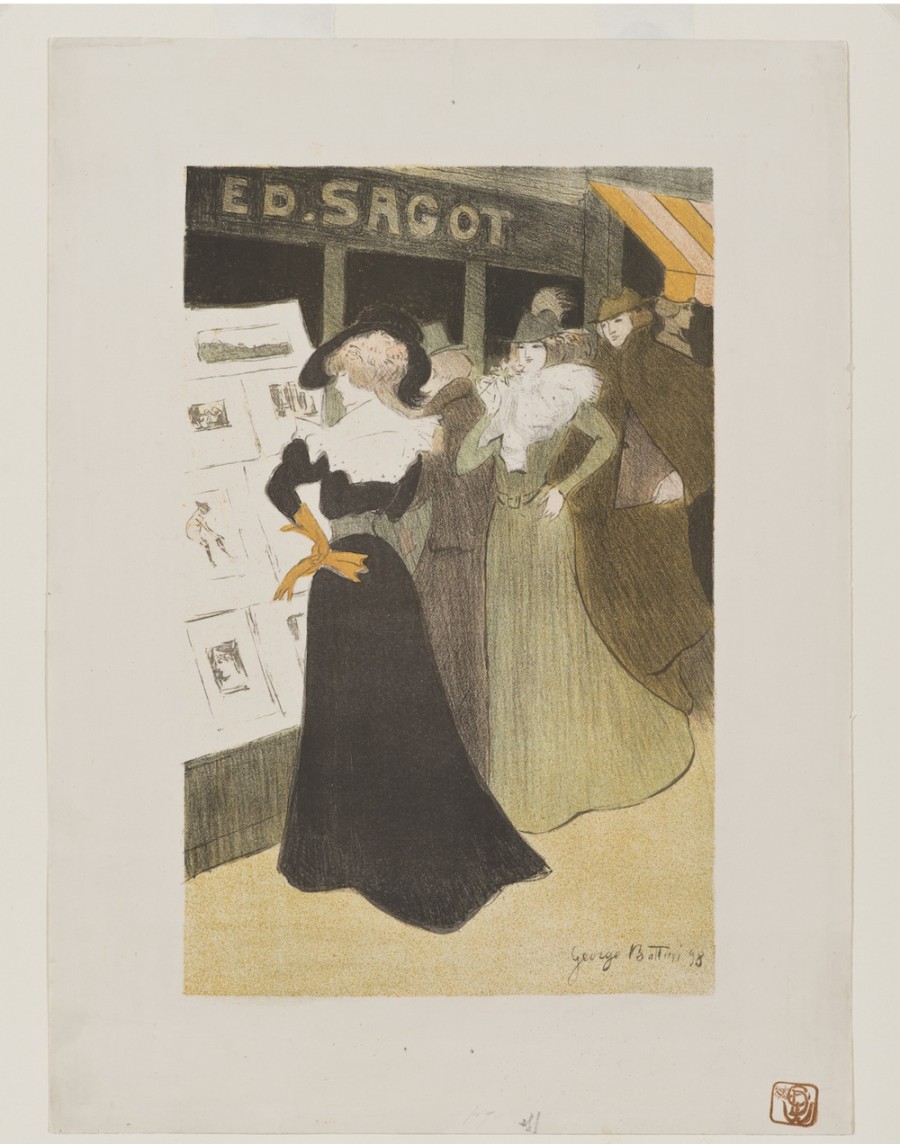
George Bottini, Sagot’s Lithography Gallery, 1898. Color lithograph, 14 7/8 x 10 7/8 inches (37.8 x 27.6 cm). Collection UCLA Grunwald Center for the Graphic Arts, Hammer Museum. Promised Gift of Elisabeth Dean. Photograph by Brian Forrest.

Eugène Grasset, cover for the sheet music of Enchantement by Jules Massenet, c. 1890. Chromotypography, 13 ¾ x 10 ½ inches (34.9 x 26.7 cm). Collection UCLA Grunwald Center for the Graphic Arts, Hammer Museum. Promised Gift of Elisabeth Dean. Photograph by Brian Forrest.
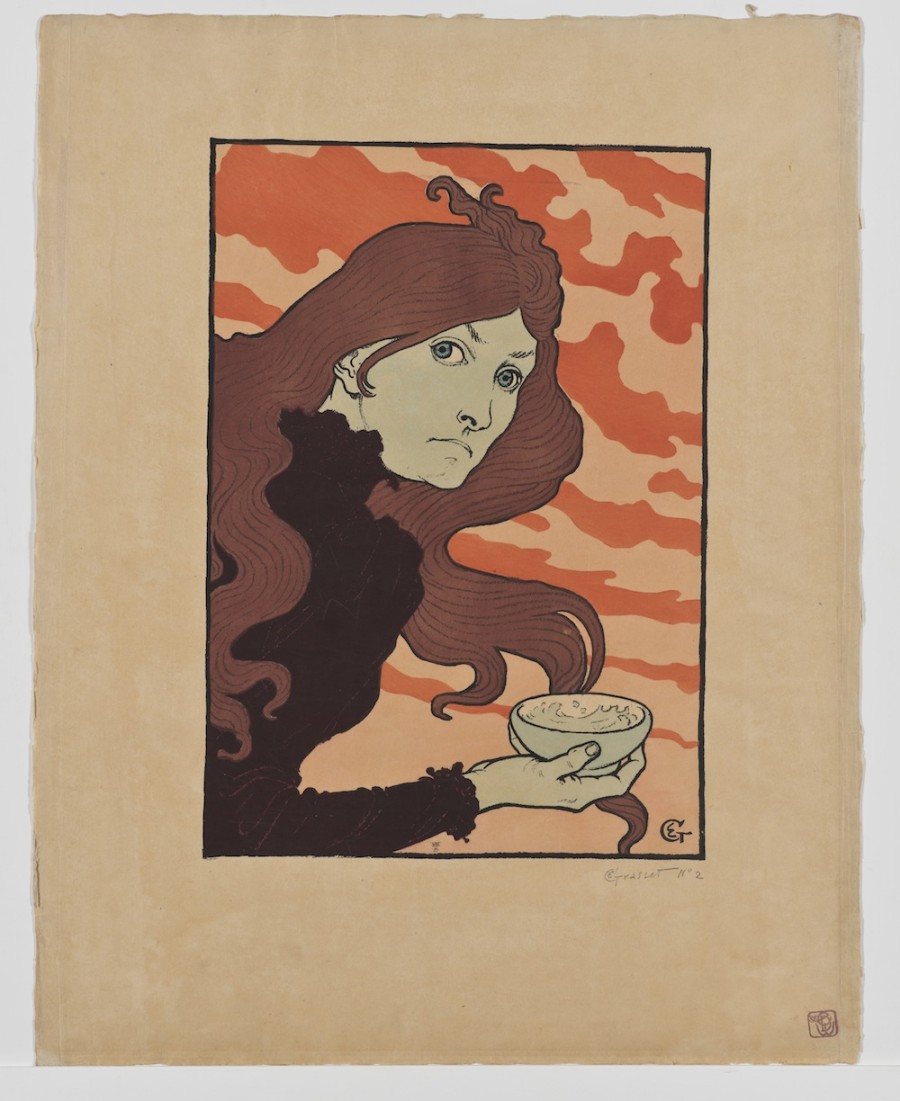
Eugène Grasset, La vitrioleuse [The Acid Thrower], 1894. Photo-relief with water-color stenciling, 22 7/8 x 18 inches (58.1 x 45.7 cm). Collection UCLA Grunwald Center for the Graphic Arts, Hammer Museum. Promised Gift of Elisabeth Dean. Photograph by Brian Forrest.
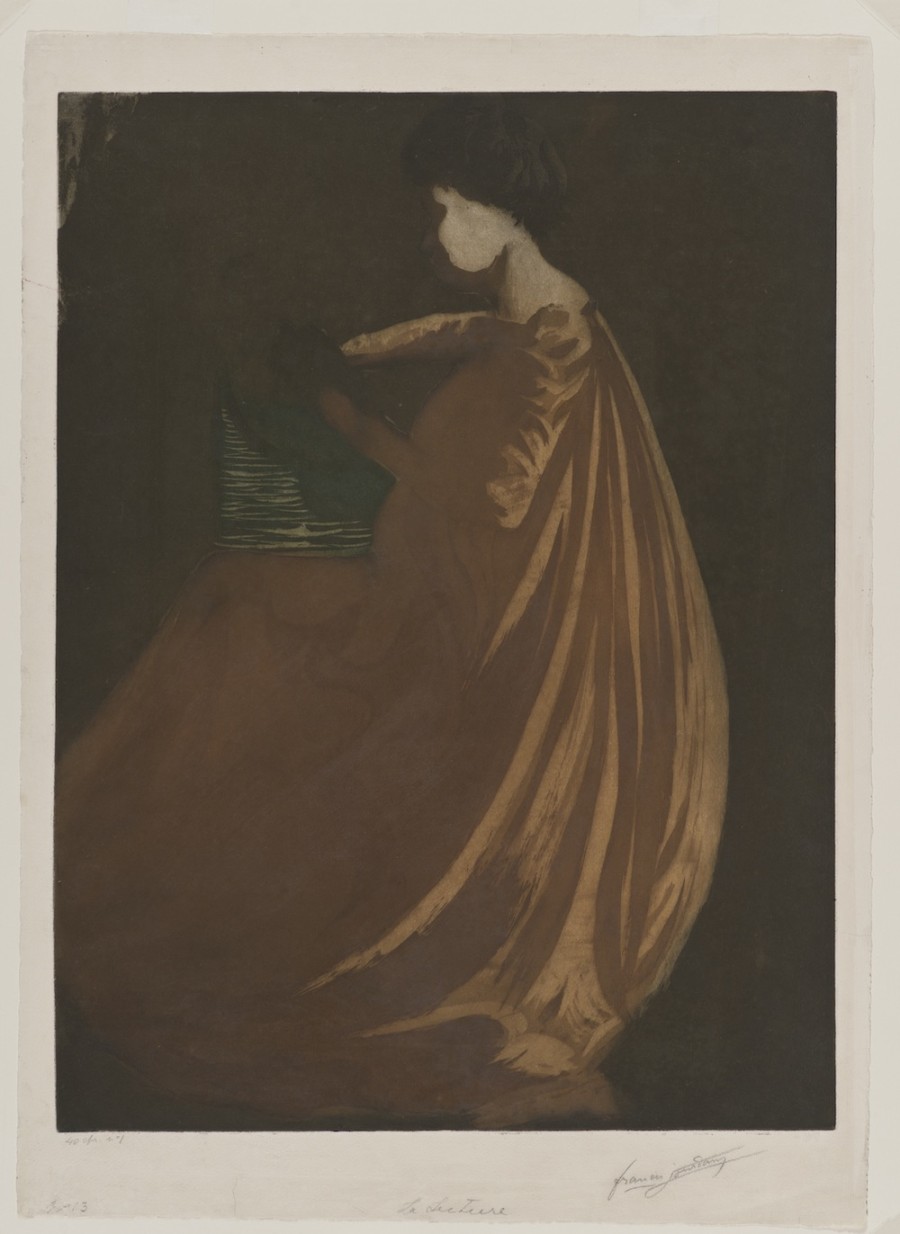
Francis Jourdain, La Lecture [The Reader], c. 1900. Color etching and aquatint, 24 x 17 ¼ inches (61 x 43.8 cm). Collection UCLA Grunwald Center for the Graphic Arts, Hammer Museum. Promised Gift of Elisabeth Dean. Photograph by Brian Forrest.
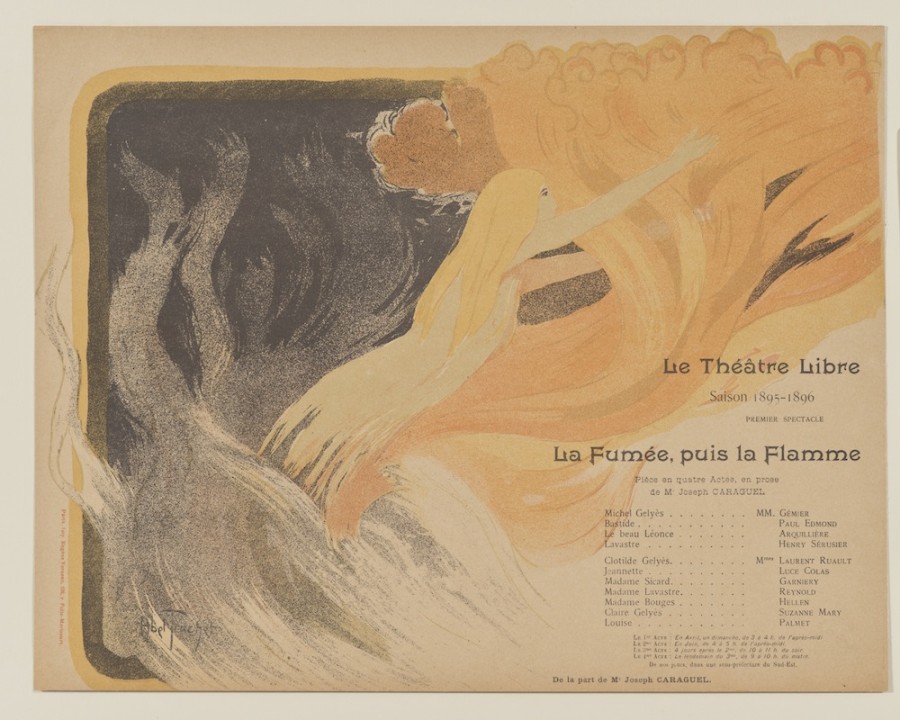
Louis Abel-Truchet, program for Le Théatre Libre’s production of The Smoke, then the Flame, 1895. Color lithograph, 9 ½ x 12 1/8 inches (24.1 x 30.8 cm). Collection UCLA Grunwald Center for the Graphic Arts. Purchase. Photograph by Brian Forrest.
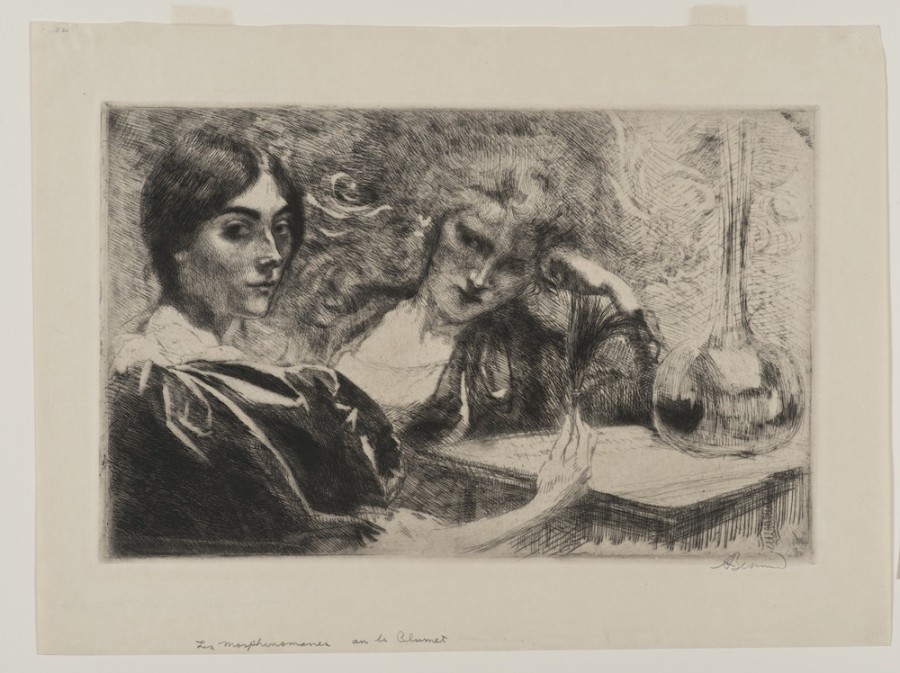
Paul Albert Besnard, Morphinomanes ou Le Plumet [Morphine Addicts or The Plume], 1887. Etching, drypoint and aquatint, 12 11/16 x 17 1/4 inches (32.2 x 43.8 cm). Collection UCLA Grunwald Center for the Graphic Arts. Purchase. Photograph by Brian Forrest.

Victor Emile Prouvé, L’Opium, 1894. Color lithograph, 24 3/8 x 17 inches (61.9 x 43.2 cm). Collection UCLA Grunwald Center for the Graphic Arts, Hammer Museum. Promised Gift of Elisabeth Dean. Photograph by Brian Forrest.
